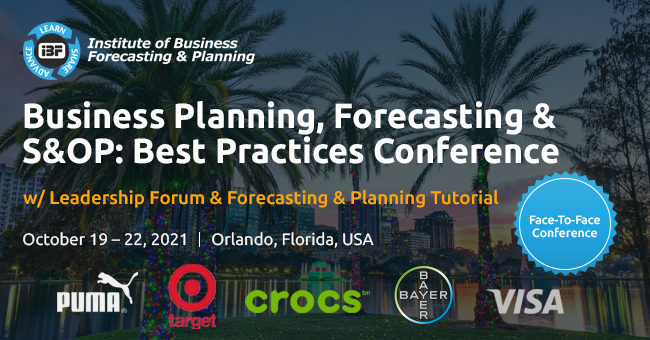A few years back we decided to totally change the way we created forecasts and did something radical – we fired Sales from generating the monthly forecast. The result was more collaboration, less time creating plans, and improved forecast accuracy. The best part? Sales, Supply Chain, and myself were much happier as a result.
The more time I spend in this field, the more I believe Sales should not be forecasting. For starters, we all agree it is not the best use of their time. Secondly, let’s face it, they are not that good at forecasting either. As a Demand Planner now, I personally do not want sales to forecast every customer and item every month – just give me the Cliff notes.
This may not seem radical to some but for us it was a big change. Forecasts had been created by our Sales team since forever and were aggregated up to create plans. It made sense when they started; they were closest to the customer and they were accountable for converting leads to revenue. They knew what was broadly possible in terms of sales so it kind of made sense.
Salespeople Are Not Good Forecasters
The problem, however, is that this process would take a good week or more every month. They needed a long time to generate the forecast, aggregate data, review the top lines, and see if they were hitting plans. The even bigger issue was that while they were close to the customer and had a feeling for what is occurring this month, our forecast needed to be 3 months out so supply chain had enough time to ensure enough product was ready to fulfil demand. When it came to forecasting out 3 months, Sales were, for the most part, simply guessing. They were creating “wish-casts” and not a forecast.
There’s A Better Way To Forecast
When I say Sales are not good forecasters, I am allowed to say that because I grew up on the commercial side of the business. I was a Marketing and Sales analyst who was in charge of aggregating those forecasts and delivering the final plan. Following a move into Supply Chain and having done IBF training and my own studying to really understand demand planning, I found a better way:
- Start with a statistical baseline
- Let Sales know what kind of information you need
- Build a structured process for inputs and review
- Adjust the forecast for what it doesn’t know
- Drive a consensus forecast
- Measure the process and FVA%
Our new way of creating a forecast began with an automated statistical forecast as our baseline. It was my job then to add in outside variables like promotions and other factors. The forecast was then disaggregated and created for each salesperson to add specialized market intelligence and be ready to discuss if there were questions.
Now, on the first Thursday of every period, we have our demand review and we add anything that was not in the plan and finalize a consensus forecast. There are always some additional ad hoc calls and emails prior to the demand review to clarify details on some aspects.
What Happened When We Took Over The Forecast Process?
The end result was that Sales avoided spending countless hours dealing with numbers and trying to create forecasts without the requisite skills. It meant less time spent in meetings and on a computer. It freed up time for them to what they do best: prospecting, selling, and closing.
When I said that Sales shouldn’t be forecasting, that doesn’t mean we don’t want their input. Using a statistical baseline as our starting point, we already know things like level, trends, and seasonality. We know that the biggest selling season happens every summer and that demand on holidays repeats. But there are things we need to know that are not baked into the baseline forecast. Like Patrick Bower said in the comments of one of my recent LinkedIn posts, “ask Sales for more structured data. i.e., new customers, new distribution, new promotions, deletions etc.”
A concern when transitioning to this new process was that Sales would no longer have accountability and we would get less participation and less of the information we need. What we discovered was that a consensus forecast actually drives group accountability and ownership. Collaboration increased with a structured approach that helped them in the long run. As forecasts improved, service improved which facilitated their sales efforts.
One more thing – last year I added a new key performance indicator, Forecast Value Added (FVA) after it was highlighted in one of Eric Wilson’s podcasts (The Magic of Forecast Value Added). This KPI allowed Sales to understand how their input into the process impacted forecast accuracy which fostered more accountability and drove more collaboration.
For more insight into forecasting and planning best practices, join us at IBF’s Business Forecasting, Planning & S&OP Conference in Orlando, held from October 19-22 at the Wyndham Orlando Resort. The biggest and best event of it’s kind, it’s your opportunity to learn best practices in S&OP, demand planning and forecasting, and network and socialize in a fantastic setting. See here for details.

